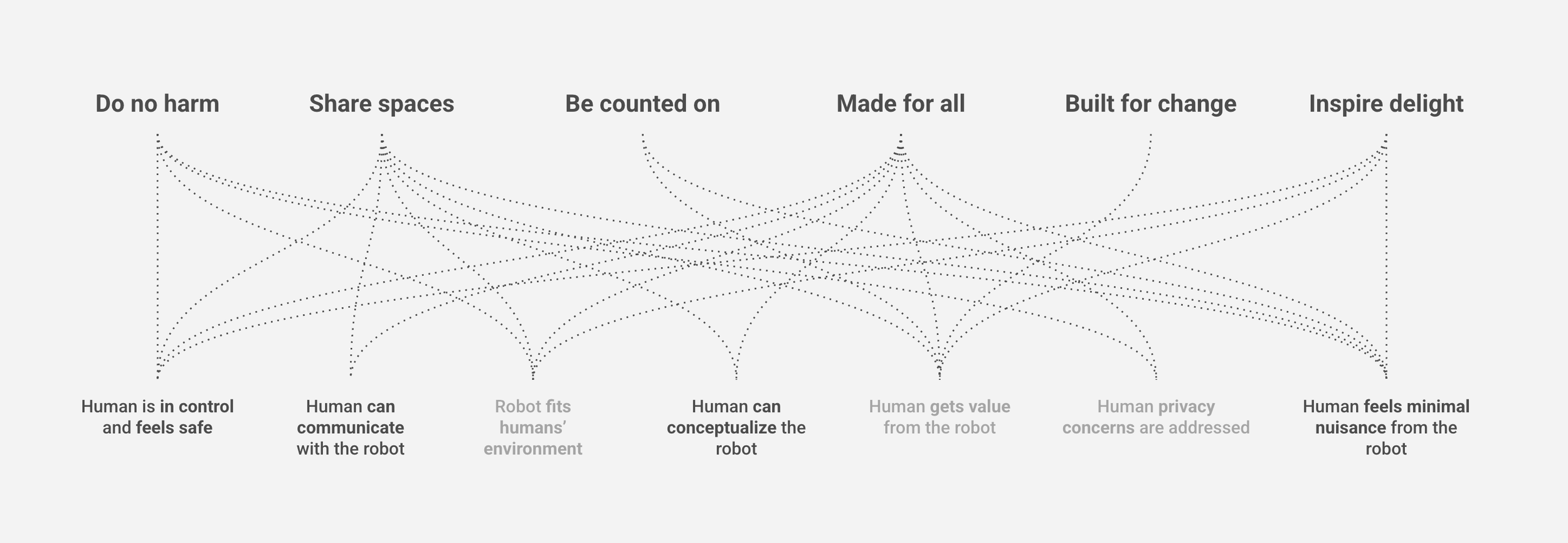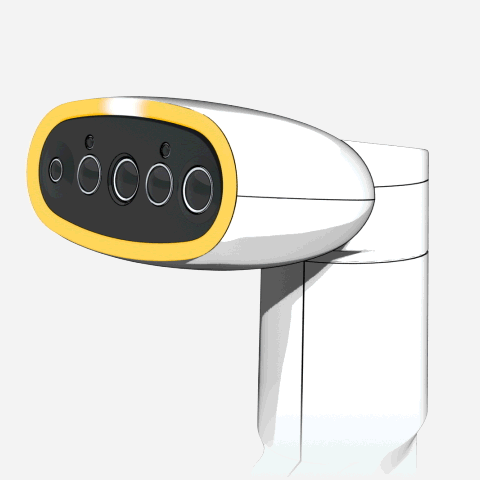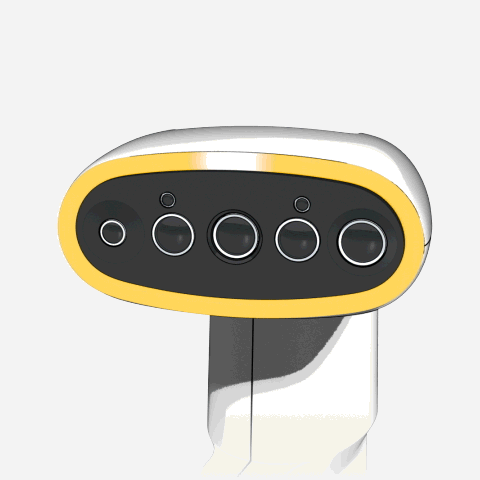
Everyday Robots
Strategy, UX Design, Motion Design

The Challenge
Everyday Robots was developing an autonomous self-learning robot that would work in cooperation with human workers in human-occupied spaces.
In order to create trust, predictability, and safety – a robust framework of communication is required that can facilitate intuitive communication between the robot, workers, and bystanders.
A Framework for Human-Robot Interaction
Starting with the project’s mission and goals, our team identified and mapped key pillars of interaction between humans and robots that would need to be managed. These pillars were used to guide both the physical design of the robot and its behavioral and communication guideposts.


Movement
Movement is the robot’s first impression and provides a macro context for all communication. Leading with its head imparts directionality and context to the robot’s actions in a mode that is familiar and intuitive to people.

Light Ring
The light ring is able to communicate the robot’s internal logical processes, using color and motion to convey tone quickly and intuitively. This non-anthropomorphic ‘face’ allows bystanders to conceptualize the robot’s internal processes.

Speech & Sound
Distinct sound design must be paired with all visual communications related to key interactions. In addition to processing natural speech, we aim to be accessible to alternative modes of speaking such as sign language.